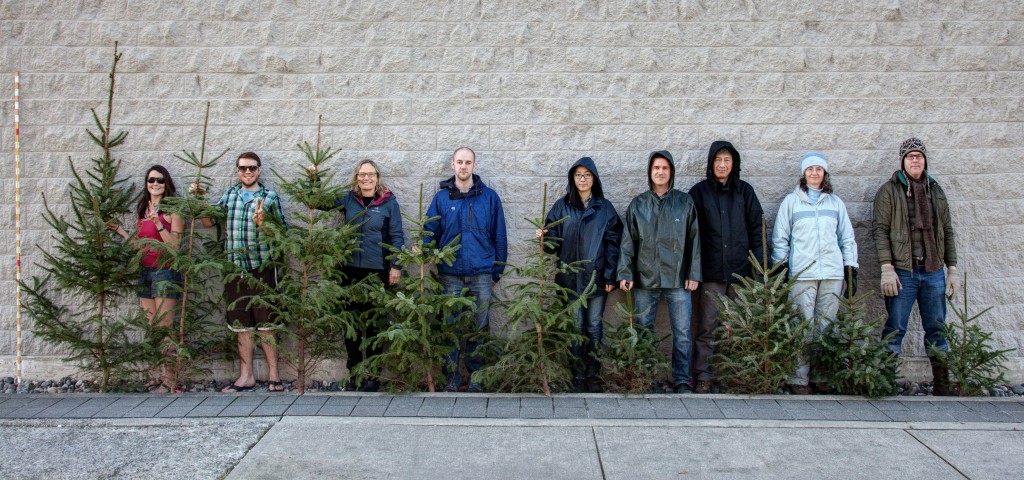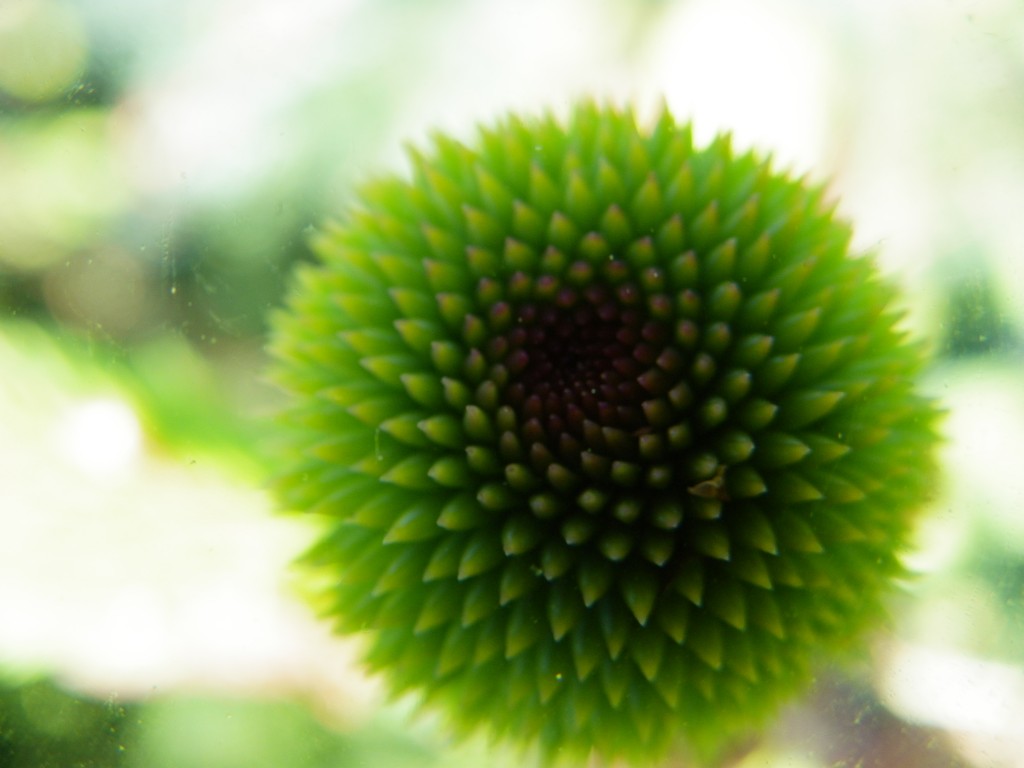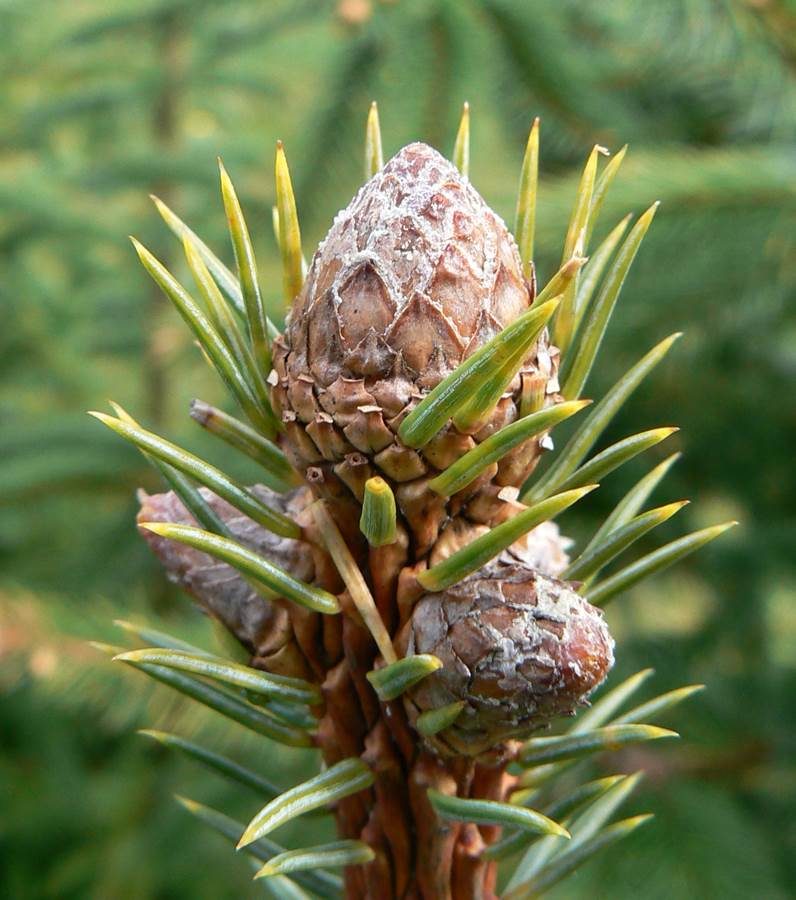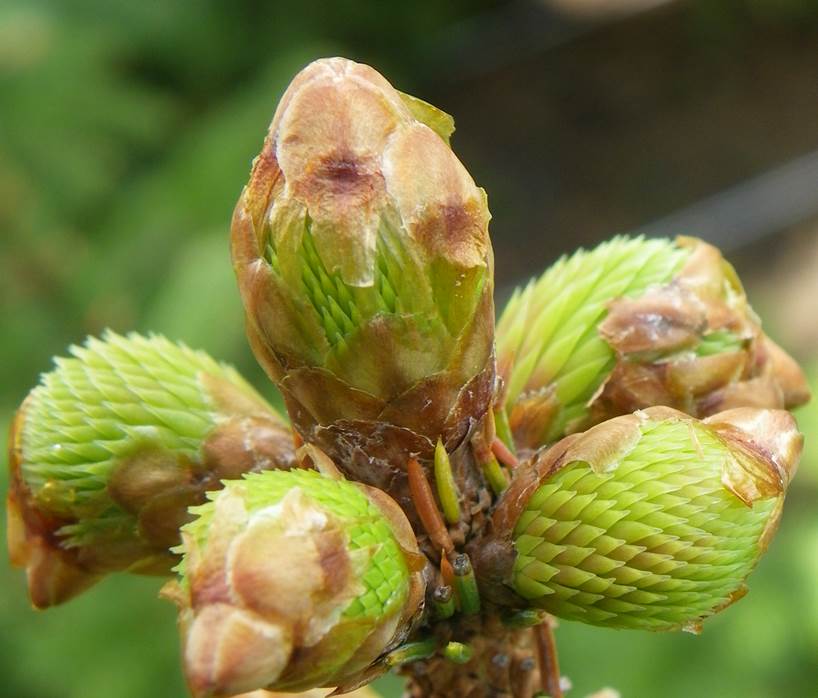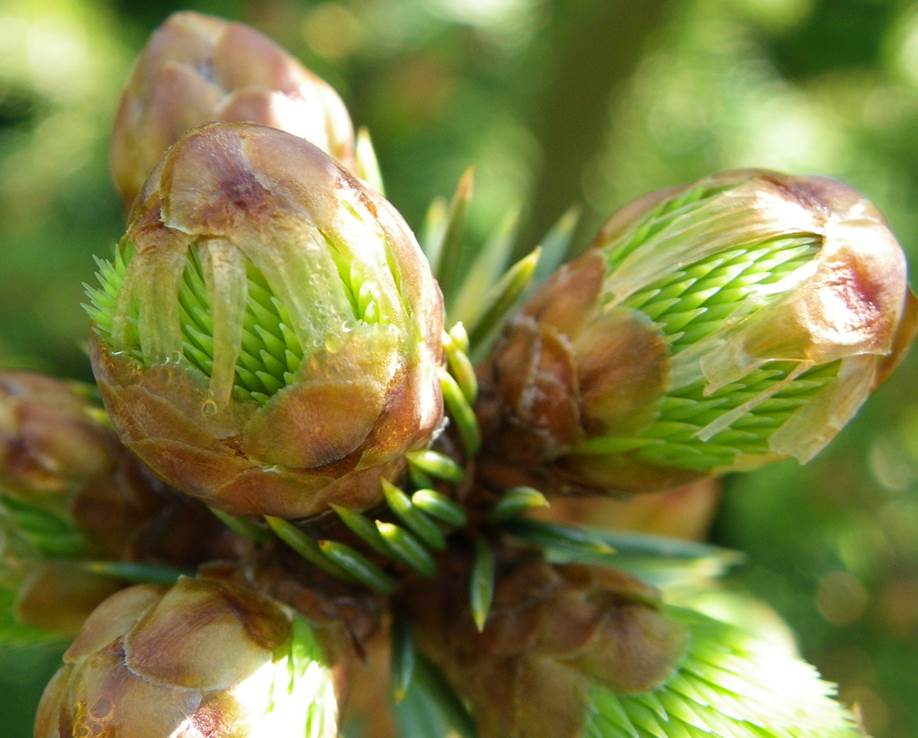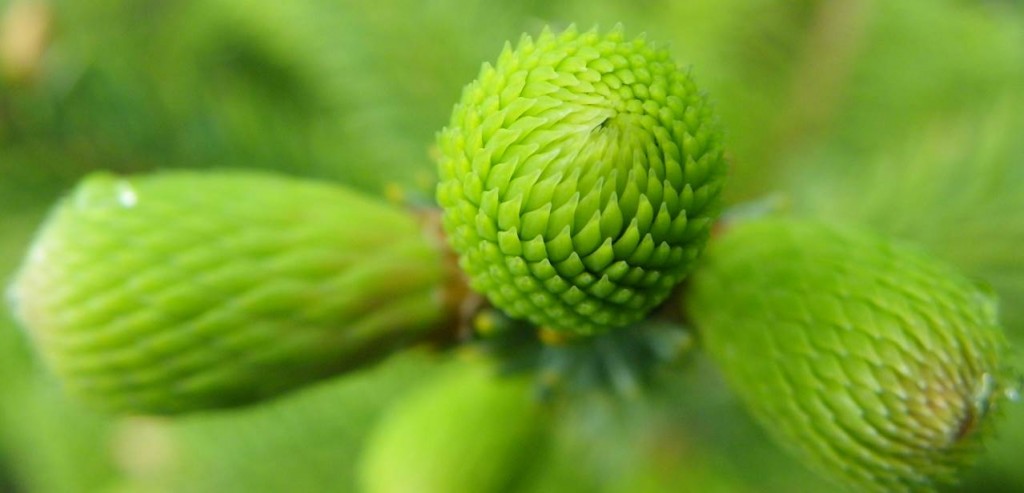A picture is worth a thousand words
We’ve all seen those photos that illustrate local adaptation better than a graph, text or an equation, and as a result get used in talk after talk (think benthic and limnetic sticklebacks, mouse coat colours in different environments, or peppered moths). Our Sitka spruce common garden materials with populations from across the species range has been studied by three PhD students in our lab (Makiko Mimura, Jason Holliday and Joane Elleouet), and we have shown lots of graphs of the dramatic differences in growth, phenology and cold hardiness among populations. However, we decided it was time to take advantage of the need to thin the experiment by setting up individuals for a photo shoot. We cut an average-sized, representative tree from each of nine selected populations that were roughly evenly distributed across the range, set those up against a uniform wall of the Forest Sciences Centre. We enlisted the Faculty of Forestry’s graphic artist and photographer Jamie Meyers to take the photo.
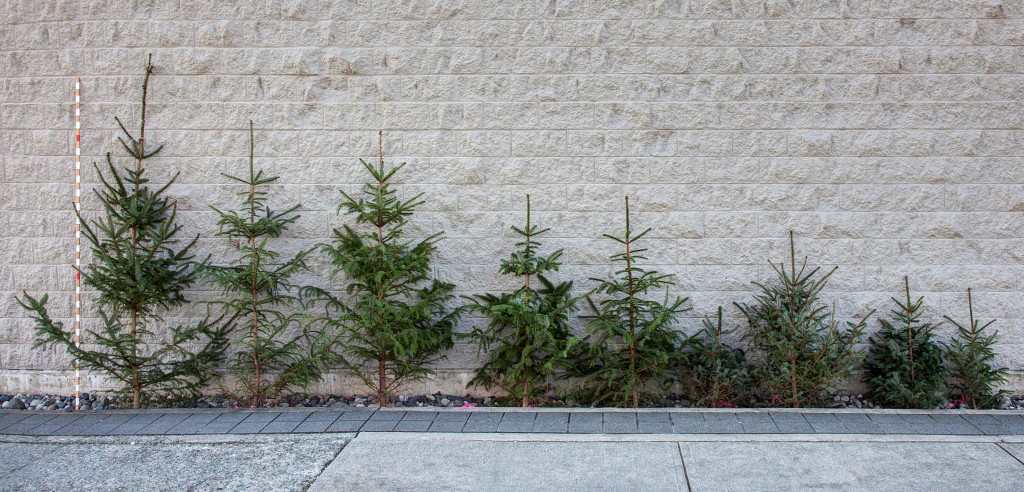
From left to right, ordered by mean annual temperature: Redwood (CA), Columbia river (OR), Vancouver (Southern BC), Ocean Falls (Central BC), Prince Ruppert (Northern BC), Kodiak Island (South-central AK), Icy Bay (South-eastern AK), Rocky Bay (South-central AK), Valdez (South-central AK).
Finally, for fun and for illustration, we had lab members dress as if they were in the home environments for each population. Here is the result:
We hope these photos will be useful to our group and to others for years to come.
Written by Sally Aitken.

